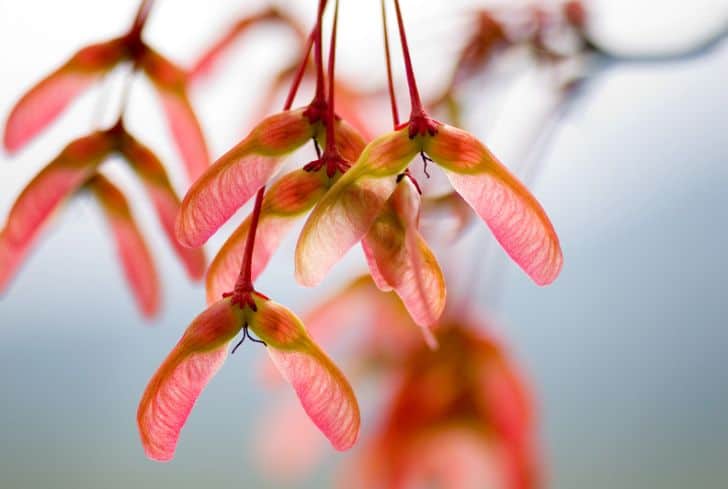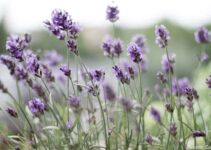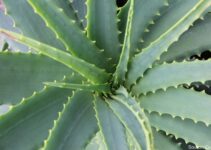In the habitat of plants are several types of seeds. Several of these seeds have attributes and properties that make them different from others. Their uniqueness also makes them difficult to find.
A helicopter seed is one of the unique seeds in the plant kingdom; it is also rare and can be found on certain types of trees. A maple tree is distinguished by its vivid hues and unique patterns.
Do you know a helicopter seed can be found on about 11 trees? However, only four maple trees grow the most helicopter seed. If you want to know which trees those are, keep reading to find out!
Read: When Do Maple Trees Bloom?
What are Helicopter Seeds?
The Samara fruit, also called helicopter seeds or maple seed, is a favorite of many florists and environmentalists. Instead of soft fruits like pears or berries, helicopter seeds are dry fruits.
A kind of seed that spins when it falls from a tree is called helicopter seed. When the wind blows, a thin wing that protects the seeds distributes them further than many other fruit seeds.
They may move farther away from their parent tree than they would be if they dropped to the ground due to their spinning motion, lightweight, and ability to catch the wind.
This is how plants and trees disperse their seeds to lessen rivalry for light, nutrients, and water with the parent plant. Such seeds are occasionally called wing-nuts, spinning jennys, whirligigs, and winged seeds.
While a few of these terms help people comprehend what is so unique about some of these fruits, their proper botanical name is samaras. A wide variety of tree species produces these samaras.
However, most of them differ architecturally enough to be identified by the tree they originated from. Since so many maple trees produce them, the term “maple seeds” is frequently used to refer to these so-called “helicopter seeds.”
However, it is crucial to realize that more than maple trees produce these seeds if we are to be precise. In actuality, these seeds are also produced by numerous other tree species. Above all else, helicopter seeds represent an evolutionary step forward for trees.
Most trees use various techniques and tactics to disseminate their seeds and widen their range. The wind is a typical means of seed distribution. Trees depend on the breeze to spread their seeds over a larger area, expanding their control area.
As trees changed over time, so did the shape of their seeds. In this instance, the seeds developed into a thin, paper-like structure that can float through the air and go farther. By doing this, the seeds are guaranteed to disperse farther from the plant.
This dispersal of seeds results in less competition among trees of the same type for nutrients and food. As a result, the trees can develop more effectively because they all have more nutrients.
The fact that samaras are produced by such a wide variety of tree species indicates how advantageous this genetic development has been for trees. This is the reason why several trees have acquired this quality.
4 Maple Trees That Produce the Most Helicopter Seeds
Although several trees produce helicopter seeds, those that produce the most seeds are the maple trees. The four maple trees that produce the most helicopter seeds are Red Maple Trees, Japanese Maple Trees, Norway Maple Trees, and Silver Maple Trees.
1. Red Maple Trees
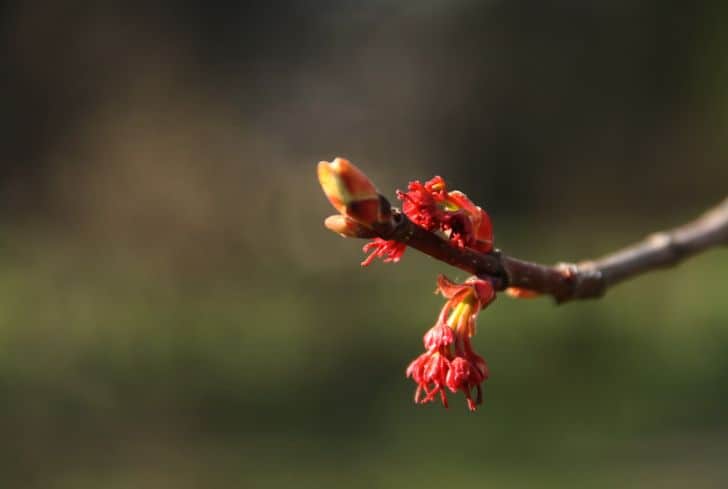
The red maple tree is a wonderful way to spruce up your room with color. You will undoubtedly enjoy Rhode Island’s state tree at any time of year.
The tree’s branches compensate for the absence of one beautiful feature by adding more, even when the leaves fall off in the cold, and the plant loses its vibrant bright red hue.
Young green stems would turn red in the winter, continuing the process of bright red to bright green that occurs all through the seasons. Red maples are notorious for having sap that is not as tasty as other trees, but they produce many helicopter seeds.
2. Japanese Maple Trees
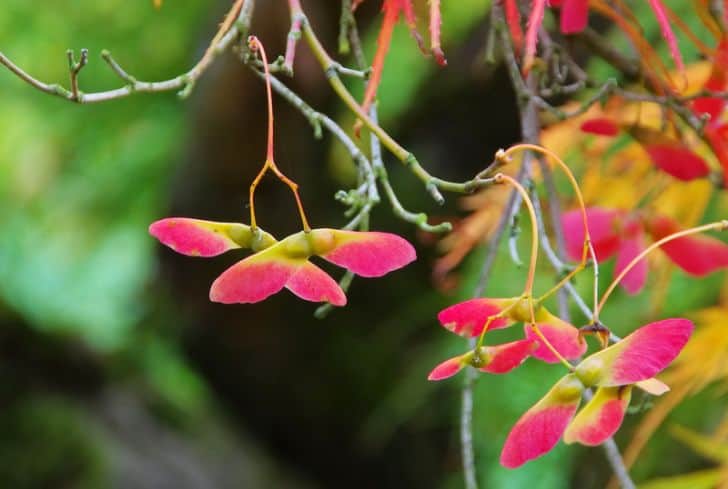
Being one of the most adaptable trees has its advantages, one of which is that while Japanese maples are relatively common, each one differs slightly from the trees around it in terms of appearance.
Therefore, even if the helicopter seeds are successful and a couple of new Japanese maple trees start to sprout, you will still have the gift of witnessing wholly unique trees develop at various rates and in various ways.
In addition to the growth styles and patterns themselves, even the form and size of the leaves vary.
3. Norway Maple Trees
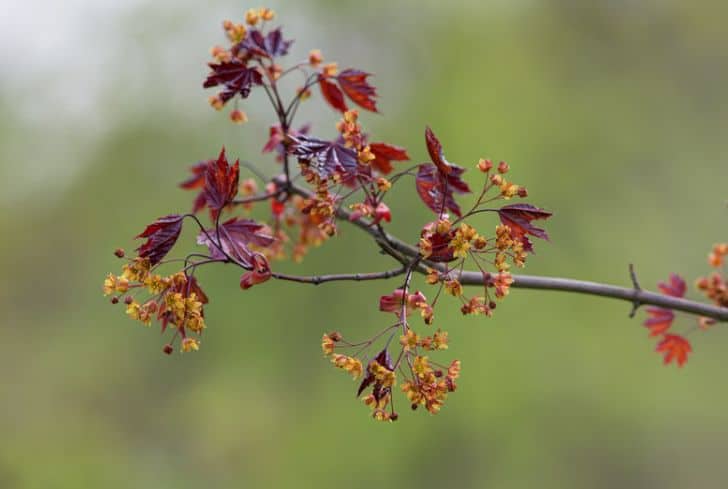
As opposed to their relatives, Norway maples are not as frequently discussed. However, due to their profusion of seeds and the great distances those seeds may travel, these plants are medium to giant and reproduce regularly.
Samaras, or helicopter seeds, on Norway maples are roughly two inches long and have two thin wings.
4. Silver Maple Trees
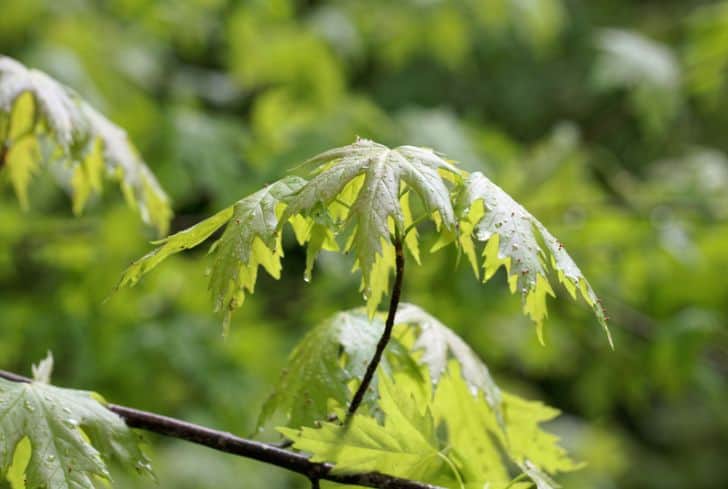
The hues of silver maples are well known. Their qualities go well beyond only having a silvery underside to the leaf or even being one of the most widespread species of trees in America.
Along with being distinctive and having a large population in North America, the silver maple’s first distinguishing quality is the sap it produces. The silver maple competes effectively, yielding more whirlybirds and sweeter sap.
Silver maple is dependable for appearance, flavor, and a small amount of entertainment whenever the wind blows and the helicopter seeds fly.
Do All Maple Trees Have Helicopter Seeds?
Samaras, or “helicopters,” are the winged seeds cultivated by maple trees. All maple species produce samaras, but red, silver, and Norway maples frequently yield the most.
In North America, there are 14 common types of maple trees. Although they all create helicopters, it can be challenging to distinguish between them because of the variety of models and visual variances.
In particular, maples are adept at self-reproduction. In contrast to other samaras with a single wing, helicopter seeds could be dispersed and carried a significant distance by the breeze when they fall.
Several seeds lose their effectiveness or are consumed by animals as food. Additionally, each helicopter is more likely to survive and locate a spot to develop because each one contains two seeds.
Do Maple Trees Have Invasive Roots?
The roots of maple trees can spread over an area three times as large as the circle of their branches. Although most maple species do not have invasive root systems, species like the Norway Maple and Silver Maple are well known for having such systems.
The invasive roots of Norway and Silver maples are well known. Particularly the Silver Maples’ roots can obliterate roadways, sidewalks, and foundations. Planting distances for Norway and Silver Maples should be a minimum of 100 feet apart.
Norway maples are invasive trees that do not belong native to North America. It is not known for red maples, Japanese maples, or sugar maples to possess invasive roots. Ensure that you are aware of the species before growing any maple trees.
Their roots are harmful and can also stake out territory and endanger native tree species. Ensure you know how far to space your maple tree towards your residence before planting. The type of maple you intend to plant will determine how far away from your house is ideal.
Do Maple Seeds Decompose?
Yes, just like several other seeds, maple seeds decompose. Even the most excellent maple trees produce an abundance of maple seeds that can travel quite a distance. However, some of these seeds might lose their effectiveness and decompose.
The removal of maple seeds is simple yet time-consuming. While there might be a mess with no cleaning, most debris will not sprout and eventually decompose and improve the soil.
However, some grow and landowners will need to pick them up manually. Helicopters are often removed by scraping them using a rake or sweeping them up and placing them in a trash pickup bag.
Another method is to spread one or more blankets beneath a maple tree to collect the seeds. The grass or garden below can still be protected with a tarp, but a sheet enables water and light to pass through.
When Do Helicopter Seeds Stop Falling?
When a maple tree reaches maturity, which occurs at roughly 20 to 30 years of age, it usually stops producing helicopters. Some trees, however, will keep producing helicopters for the rest of their lives.
The “samara”-like helicopter seeds only germinate and fall once a year. The maple trees’ seeds fully mature and start to fall off in the late spring to the early warmer months, just like the leaves do in the fall.
While the precise amount of seeds or even the kinds of helicopter seeds your plant will grow depends on its genetic makeup. You still have a lot to do to help this be optimized. In the end, environmental conditions allow genes to function to their fullest.
Conclusion
Whatever you choose to name them—samaras, maple seeds, helicopter seeds—they are not going anywhere.
These tiny flying bunches have many uses, from a tasty snack or supplement to a mealtime seed that distributes wildly and keeps maple trees in excess.
All ages can enjoy simply observing them twirl and swirl in the air as they drop from tall branches onto the grass.
So please take a few minutes today to enjoy the small pleasures, like enjoying a tasty lunch or observing nature at work, and give thanks to helicopter seeds for serving as such an amusing yet practical component of it all.
